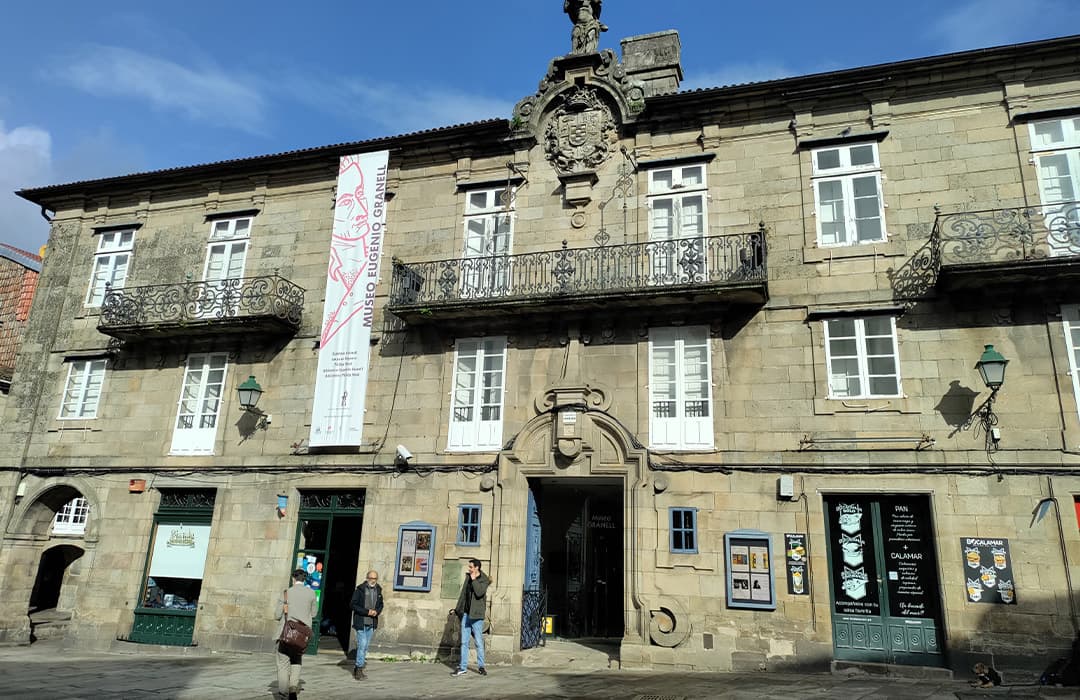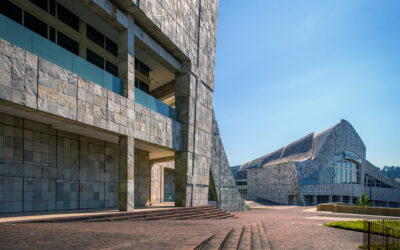The
Eugenio Granell Foundation
occupies one of the most emblematic buildings of the Galician capital: the Pazo de Bendaña.
The project of this historic building is attributed to the architect Clemente Sarela and its construction dates back to the end of the first half of the 18th century. Specifically, it occupies a site with an irregular floor plan and its main façade faces Praza do Toural, while the sides are oriented towards Rúa do Vilar and Rúa Nova.
The Eugenio Granell Foundation was created in 1995, following the signing of an agreement between the artist himself and the City Council of Santiago de Compostela, a place with which the author maintained close ties throughout his life.
The objective of its implementation is to disseminate the work and legacy of Eugenio Granell among citizens and promote its study.
Granell is a significant representative of Surrealism, in which he was introduced through André Breton, and his artistic production went through numerous disciplines: from painting, sculpture and drawing, to poetry and essays, among many others.
In this way, his multiple exhibitions have been showing the different faces of this multifaceted artist, as is the case of ‘Granell and the theater’, which addressed his relationship with the dramatic genre, or ‘Images of the dream in freedom. The cinema of Eugenio Granell’, dedicated to his experimental and surrealist films made in the 1960s in New York.
The museum safeguards an important selection of works by Granell, his surrealist and ethnic collections and dozens of pieces donated by the English artist Philip West.
The second floor and part of the second floor are dedicated to temporary exhibitions, both of the museum’s own collection and of Galician and international artists such as Paco Pestana, Max Ernst or Gordon Onslow.
As part of its founding objective, the museum hosts a program of educational activities and guided tours designed for the youngest visitors, among other proposals.
It also promotes theatrical and musical activities, recitals and conferences and seeks to consolidate itself as a space for cultural creation and promotion.






